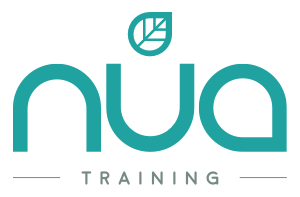
It’s true, speaking to an audience – to a dozen people sat around a table or to a full conference room – can render the most confident person a nervous wreck. Even people in the public eye suffer, and it’s something that Kate Middleton admitted when she gave her first ever public speech. She described it as a ‘terrifying’ experience. It reminded me of a fear shared by another member of the Royal Family, Prince Harry. Two years ago, as part of World Aids Day and the ‘Share a Secret’ campaign, Harry revealed:
“Believe it or not, I get incredibly nervous before public speaking, no matter how big the crowd or the audience. Despite the fact that I laugh and joke all the time, I get incredibly nervous, if not anxious, actually, before going into rooms full of people when I am wearing a suit. And now I have confessed that I’ll probably be even more worried that people are looking at me.”
The prince’s secret was quite a surprise – he has become an increasingly assured speaker as his public commitments have developed in recent years.
For many people, public speaking is something to avoid or endure. Having to do it can bring on all kinds of reactions – uncontrollable shaking, profuse sweating, racing heartbeat, breathing difficulties, even an inability to stand up. Many of my clients are fine presenting to a small group, but put them in front of a large audience and they are traumatised. Many avoid such situations completely.
Even actors and actresses, who we would expect to be confident because of their training, can struggle to conquer an attack of nerves at the prospect of public speaking. Emma Watson, who played Hermione in the Harry Potter films and is now UN goodwill ambassador, has spoken about her fear of delivering her first speech to the UN:
But despite the fears, Kate, Harry and Emma all continue to stand in front of audiences and deliver compelling speeches on a regular basis. How and why do they do it?
They all have important messages to share – and so do you
I regularly work with clients who have, over time, developed their confidence at public speaking. They have all had a strong desire to to conquer their fears and the determination to develop themselves. The good news is that you too can become a more confident speaker through practice and training.
Here are my top tips for improving your presentation skills and overcoming your fear of public speaking.
- Be prepared
If you are relatively new to presenting to larger groups ensure you have enough time to prepare. If you don’t then turn the invitation down. The more time you have to research your topic, gather together the best content and then curate it in the most compelling way, the better the end product will be. Good presenters spend a great deal of time honing their content. After that, rehearse, rehearse, rehearse – out loud, in front of a mirror or film yourself on your phone. Get feedback from colleagues, partners. Never ever attempt to wing it!
- Don’t use slides as a crutch
Death by PowerPoint is a common complaint about presenters. If you use slides as your script you will bore your audience. Slides can be useful if it is your first time speaking to a large audience as they can help you keep to your structure, but they are not the presentation – you are. Keep text to a minimum, surprise your audience with stunning visuals not lots of words.
It’s okay to use notes. Write key points clearly on cards so you can easily read them as you go through your presentation. You can even colour code the cards to denote different sections, which means you can easily find where you need to be if you lose your thread.
- Be yourself
Everyone is different, everyone has their own presentation style. Be as natural as possible. Yes, you will need to speak a little more slowly if it is a large group and you need to ensure everyone can hear you, but try to be yourself. Speak from the heart, share your personal stories and you are much more likely to engage the audience with your authenticity.
- Consider your audience
When you start planning your presentation think about who is attending. How much do they know about your topic? What are they going to be most and least interested in? What can you teach them? What do you want them to do having heard your presentation? Design the content around their needs. Relevant content will give you that all-important boost of confidence.
- Remember to pause
Nerves can often lead to rushed speaking, it’s that desire to get the presentation over and done with as quickly as possible. Breathe, take your time, the larger the group the more you need to pace yourself so that everyone can follow. Use pauses to give your audience time to reflect on what you’ve said – and for you to gather your thoughts and appear fully in control and confident!
With that fear conquered, who knows what you might achieve – maybe you’ll start speaking at conferences, maybe you’ll finally go for that promotion that would mean more public speaking. There’ll be no holding you back!
